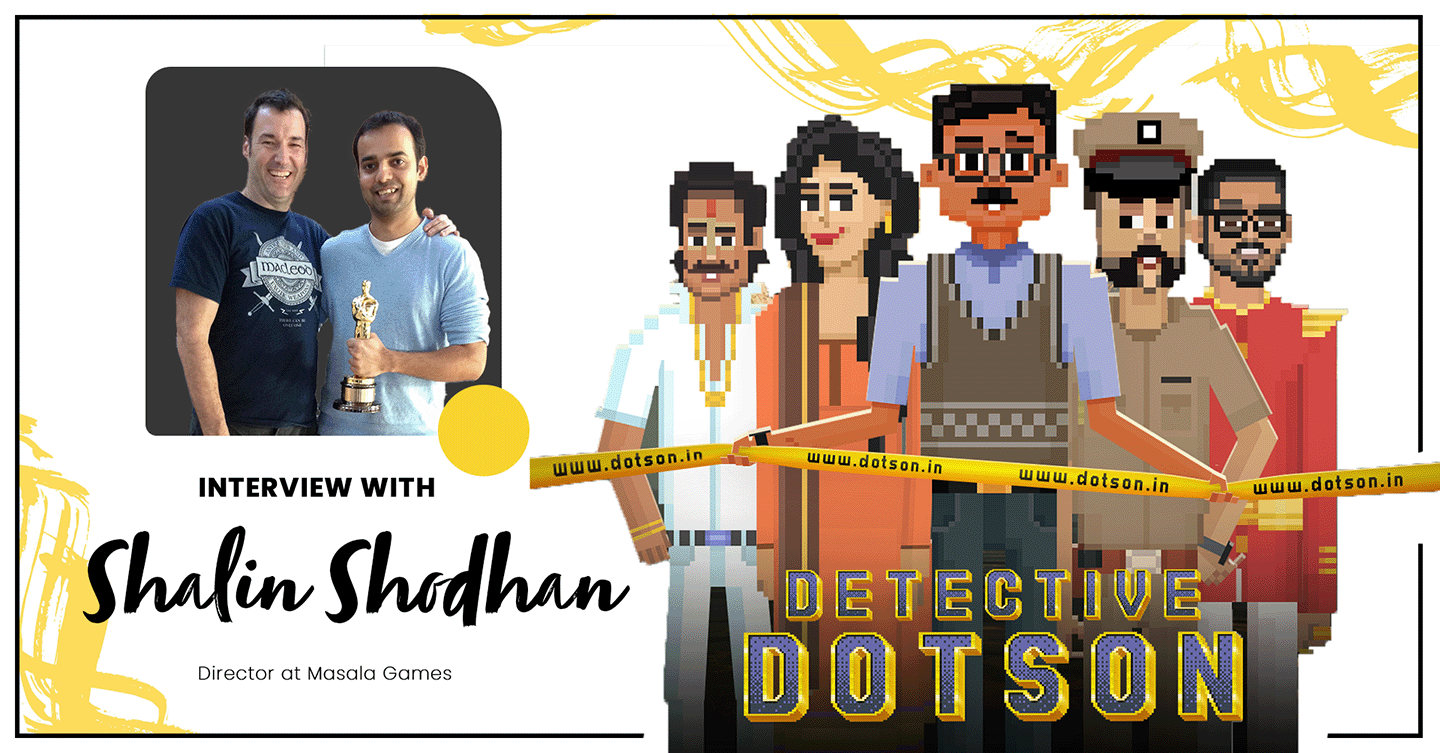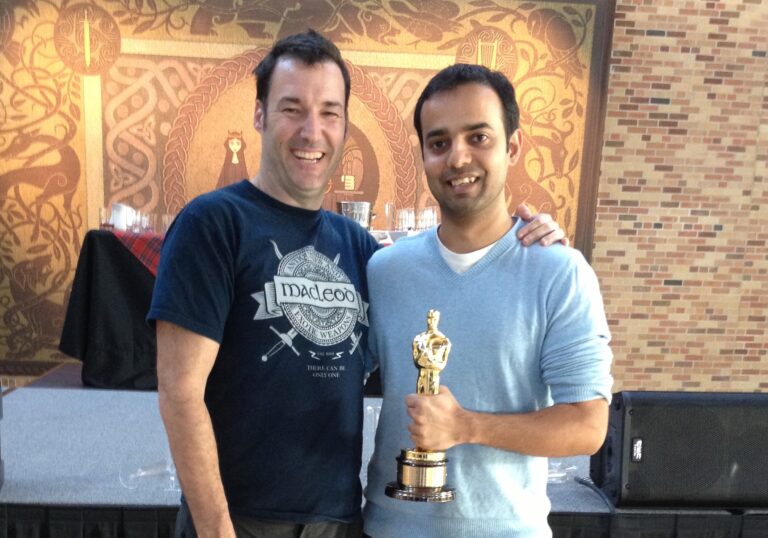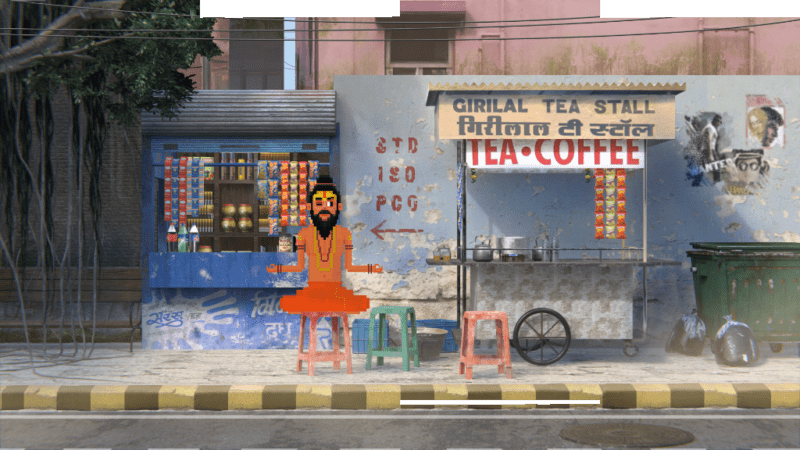
Interview with Shalin Shodhan – Director at Masala Games
Today we have with us Shalin Shodhan, a Tech Wizard behind games like EA’s Spore and multiple Pixar animation films like Toy Story 3 and Monster’s University.
Shalin is also the Director of an Indian game studio called Masala Games.
Please can you tell us how you switched from your background in Computer Engineering and went on to pursue Masters in Entertainment Technology at Carnegie Mellon? Was it always the plan?
When I was about 12 years old, I had gone along with my dad to visit a new company some of his friends were starting. There, they had what was the first color monitor I had ever seen (I know I’m THAT old!) On the screen of this color monitor was a Transformer, rendered with wireframe and color rotating at what I can only imagine was 1 fps. For me that moment was love at first sight. Just how they show in the movies, dolly zoom to 12 year old me, eyes lighting up and all. I knew that whatever it took to do that on a screen is what my life had to be about. So yeah, it was always the plan to pursue a career in computer graphics technology. A buddy of mine- Rahul Nanavati, who I made my first games with discovered the ETC at Carnegie Mellon. We both applied and both got in! So that’s how the journey began.
What was your first role in the entertainment industry, and how did you later manage to integrate your technical skills with your creative skills throughout your journey? Would you say you were one of the first unofficial technical artists?
First role was in Disney’s Imagineering department where they had a division called the VR Studio. This is 2004, so VR wasn’t a household term. I worked on the Toontown MMO and Pirates of the Caribbean MMO as a graphics programmer. First unofficial tech artist? I don’t think so. The first 5-7 years of my career were hard core graphics coding.
Having worked on 6 major animation films at Pixar, please could you share with us what some of your key takeaways were that may benefit future aspirants wishing to work at Pixar?
I absorbed so many lessons from my time at Pixar, not just about making stories and films but also about how to foster an ideal creative environment. It’s hard to summarise all of it. I highly recommend reading Ed Catmull’s Creativity Inc. to know more about the Pixar way. What helped me get into Pixar was having an elaborate portfolio of all the professional and personal graphics work I had done up to that point. So my advice to aspirants would be to always keep refining your portfolio. If you are like me and are going to bomb all the interview questions, what you can SHOW on your portfolio might save your skin.
Shalin with Mark Andrews

Having read your post on Medium, you believe in “When it’s ready, is the best deadline” which is an almost rare principle in the videogame industry that has very tight deadlines. What was the inspiration for this philosophy and is it a thought you apply at Masala Games?
Deadlines are so misunderstood. Even world class teams goof them up all the time. Now, with as-a-service models even for entertainment products, the whole equation is different. A good philosophy would be to take small palatable bites, test out your product frequently with the target audience and let it organically build up into being a fully featured thing that the market loves.
The entertainment space is well known for time management and stress. How do you manage your time and reduce stress while handling multiple roles such as CEO, Director, and CTO in various organizations you are a part of?
Chilling with my kids, catching a show with my wife, smashing the crap out of tennis balls, playing music and yoga!

What inspired you to create Detective Dotson, a unique game/animation with its own voice that breaks away from the typical Indian genre and art style as perceived in the Western lens, and what motivated you to tell this story?
I really want an authentic representation of modern India for the global audience. There are plenty of people doing ancient/epic/magical content from India, and that’s great. But I find the India you and I live in to be quite interesting too and I want to do my part in telling those stories to the world at large.

We had noticed a very relatable and campy, everyday vibe from the trailer of Detective Dotson. It spills forth with humour, suspense, action and grandiose. Was this always the vision for the series or was there a different idea initially?
We always wanted Dotson to be a bit of a bumbling fool. He is just flowing through life with minimal control, just like the rest of us. His aspiration is to be an actor in Bollywood, but his true calling is detective-giri. He just doesn’t know it!
Please can you explain the unconventional art style, its origin, how you maintain balance between the distinct styles, and how that adds to the storytelling aspect of Detective Dotson?
We worked very hard to arrive at the look for our characters. We wanted them to be cute, pixel and obviously very Indian. But at the same time we wanted their animation to be fairly nuanced and capable of displaying the complexity of who they are. Finally, to really make them pop we made the world super realistic. That juxtaposition of 2D pixel characters on a 3D real world felt amazing from the get go and so we kept pushing that as much as possible.
What would you say is the sole driving factor behind Detective Dotson? Is it the art style, the music, the setting, or the story?
Story and the characters. Everything else is in support of those two.
We had also seen the game app still in its development stage. How does the team at Masala Games shuffle between making Detective Dotson the animated series and the game? Please could you share with us how the team managed to deliver smooth movement of the pixel characters?
We have separate teams for the show and the game, with a few key roles shared between teams as the assets are also shared between the show and the game! Our characters are skeletal-animated, so I hope I don’t get yelled at by some pixel art purist. But the result looks compelling and our pipeline is well set up for it, so we’re going to go for it!
As a creator of educational games at Masala Games, and with experience at Lumosity and Teal Labs, what inspired you to pursue the edutainment field, and how important do you think it is in transforming modern education?
I released Word Mess a long time ago mostly as a fun word game. I never expected that so many teachers, occupational therapists and parents would write to me about the game, asking for features or sharing how it helped them. This is around 2012 and it really opened my eyes to the power of an engaging experience in education. Even today, very few digital educational experiences maximize their engagement. So there’s a lot of opportunity to amplify the educational value of any material, by making it engaging using technology.
As a Game Director, what are some of the current industry roles/positions across design, art, and programming that you feel Masala Games and other game studios look for in India?
I think we have excellent engineers, animators and 3D artists in India. The roles I find harder to fill are game designer, technical artist and truly exceptional 2D artists.
As a technocrat and professional having experience in Western studios and running your own Indian studio, when do you see the Indian games industry make a full switch over to AI art? Do art majors need to fear AI or would you say we are still far off?
There won’t be such a switch. AI will augment the artist, not replace them. AI tool developers and artists should work closely together to come up with the best augmentations. Art students should start taking advantage of the new tools at their disposal.
Lastly, we had noticed you had formed the Experimental Gameplay Project, now Tomorrow Corporation with Kyle Gabler and other famous game professionals. Do you have any plans to inspire the Indian game community to look beyond AAA games and make fun ones like World of Goo amongst others?
I’m slowly starting to learn more about the Indian games community/industry. There’s a shift in mindset coming and a lot of burning desire to make original products for the world stage. Our big moment, that big original franchise that the whole world loves is coming soon! Personally I hope Detective Dotson can be that, of course 🙂
Thank you once again Shalin. We cannot wait for Detective Dotson to drop! We hope Detective Dotson inspires a whole new wave of unconventional Indian game developers and gamers.
We wish Masala Games all the very best for its future endeavours.
Continue to dazzle us with your magic and your masala!
You can add “Detective Dotson” to your wishlist in the following link:



